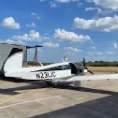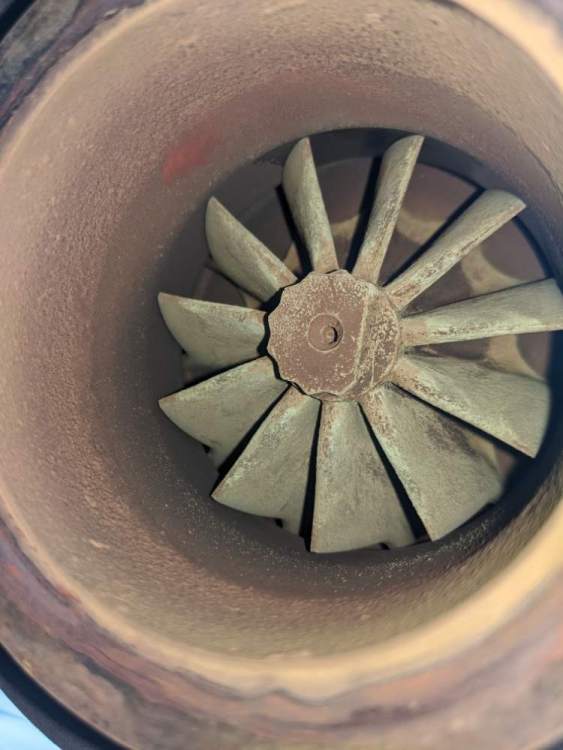-
Posts
134 -
Joined
-
Last visited
-
Days Won
1
M20Kid last won the day on October 16 2014
M20Kid had the most liked content!
About M20Kid
- Birthday 04/05/1960
Profile Information
-
Gender
Male
-
Location
Mesa, AZ
-
Reg #
N9775V
-
Model
M20K-231
Recent Profile Visitors
1,469 profile views
M20Kid's Achievements
-
Thank you all - I'll look first for anything that has an inline fuse; that seems a reasonable place to begin. TMO - you're right, tracing it back from the main panel would be difficult and not a job I'm going to take on myself. Now finding a loose wire or blown fuse near the battery seems an easy enough task. Hmm ...
-
I have an '81 M20K and the clock suddenly stopped working when I changed the ships battery some time back. Assuming the death of the clock was unrelated to the ships battery I just left it alone. Talking to my mechanic, though, he brought up the point that the clock is hardwired to hot battery because it runs all the time. He thought maybe the wire that powers the clock may have come loose during the swap of the battery. Excited, I pulled the cover off the side of the plane to look for any loose wires around the battery. What did I find? Nothing that looked like a smoking gun. Can anyone help me identify the power lead for the clock? Where does it connect to in the mass of wires running to the battery?
-
Looks great! Like others I really like the beak up front - very classy. I'll look for you next time I'm in Sedona!
-
And the answer is - the prop seal needed to be replaced. Good call, carusoam!
-
I got the turbo back and was so excited to fly that I forgot all about posting here. The results are in and Gary Main at Main Turbo was spot on; the amount of contact between the compressor blades and the case was only responsible for half the pressure loss. When I took the plane back to 21k with the fresh turbo I only got half the lost pressure back. Still unsure where the leak is occurring but the pressure difference is small enough now that I don't want to throw large bundles of cash around to chase it. My mechanic thinks it may be lower compression as the engine wears - I have over 1500 hours on the engine and about 1000 hours on the cylinders so this could just be normal aging. Hmm ... At least the plane is flying again!
-
Here's a picture of the exhaust side of the turbocharger. Rubbing at the top is obvious and, not so obvious from the picture, the bottom gap is greater than usual. The sides appear normal. It appears the turbine wheel was pulled up or case was pulled down slightly causing minor contact. Again, Main Turbo said they were unsure if this was enough to slow it down and register the manifold pressure loss. We'll see in a few days when it comes out of annual.
-
I spoke with Merlyn about this issue and they said while it's a possible failure mode, it's not a common failure mode. They sent instructions on how to check the unit locally without sending it off to them. A simple procedure that is being done during the annual. I'll report back whatever I find.
-
I thought so, too, but my mechanic pointed out it's on the wrong side of the electric box. The rotor is coming from the left and the residue is on the right. Also cleaned it about 15 flight hours ago and it's back already.
-
I have an M20K-231 with a hot prop. During annual my mechanic found something he hadn't seen before. Admittedly he doesn't work on many planes with prop deice and we were both stumped by what he found. The deice system is powered by an electric block with a brush system riding on a plate that spins with the prop. That electric block appears to be leaking a sticky black solution that is clearly not engine oil. It appears to have a graphite type of base. The substance covers the rotating plate and even has slung the stuff to create a line of residue all around it. I've never heard of an electric connector having any fluid of any kind inside it, but that appears to be the case here. The side of the residue is opposite the direction of rotation of the plate so it can't be deposited by the plate; it must be the other way around. Any thoughts?
-
I've been away from this thread for some time because I thought I found the problem and was waiting to report facts. My mechanic found the turbine vanes had shifted in the housing and were rubbing the top of the case, obviously setting up a situation where the turbo could not spin as fast. I sent the unit to Main Turbo in California and he did overhaul the unit. However, he said the rubbing was not significant enough that he could say for certain that it was a smoking gun. My plane is currently down for annual. My mechanic is double checking the exhaust manifold and intake manifold looking for leaks, as well as checking the Merlyn for losses. The only part he can't readily check is the pop-off valve. We are going to try to pump up the manifold pressure using shop air and see if we can get it high enough to verify leaks - hopefully none found. Anyway, I'll report back when I know if the turbo overhaul fixed the issue. Fingers crossed.
-
I thought about that valve. The mechanic pressurized the system to 40 inches and the valve didn't leak, but I realized with 40 inches on the ground the pressure differential is essentially 10 inches. That same pressure at altitude is over 20 inches of differential. Perhaps it does open in flight but not on the ground. How did you test the pop off? I understand it takes a specialty shop.
-
I have a strange issue that I wanted to bring to the group. I have a 231 that I regularly take to the flight levels. It's got a stock TSIO-360LB engine and a Merlyn wastegate STC; no intercooler or other mods on the system. In the past I've been able to climb to FL210 (the highest I've taken it) and still been able to run 30 inches of manifold pressure running lean of peak with a fair amount of throttle still available. The other day I was at FL200 and could only get 27 inches with wide open throttle - something has obviously changed. My mechanic was able to pressurize the manifold and discover a small air leak, which he sealed. I sent pictures of the turbo charger to Main Turbo in California and they didn't immediately see anything amiss. It seems to me that this must be either a turbo not putting out full pressure or a leak in the manifold after the turbo. Could be a manifold pressure gauge issue, but then the CHT, EGT, and TIT would all be out of whack and they're not. Has anyone experienced this same type of issue? I'm at a loss for even what type of mechanic to call - engine shop? General Maintenance? Turbo overhauler?
-
I'm not sure if I need the Hoskins 101 or not, mine has been intermittent for a while but I'm unsure of the reason. Your price includes the transducers? How do I contact you to work out the details?
- 38 replies
-
- kt112
- slaving switch
-
(and 25 more)
Tagged with:
- kt112
- slaving switch
- auto pilot
- nose gear doors
- tach
- panel pieces and components
- cluster gauge
- ki525
- kg528
- kg102
- electric tach
- hoskins ft101
- kap150
- servos
- kr87
- ki203
- manifold pressure gauge
- rochester gauges
- ammeter
- vsi
- air speed
- oat/egt
- fuel pressure amp
- blind encoder
- whelen nav strobes
- oil pressure amp
- turn coordinator
-

Radios removed for upgrade - now for sale
M20Kid replied to M20Kid's topic in Avionics / Parts Classifieds
Raptor, the JPI is a Scanner. It has 6 CHT and 6 EGT readings and it cycles through each reading staying for a few seconds. If I recall correctly it also has a TIT reading so it cycles through 13 readings in about 30 seconds. There is also a way to manually cycle or stay on one reading if there's an issue you want to keep an eye on. Let me know if it's something you can use. -

Radios removed for upgrade - now for sale
M20Kid replied to M20Kid's topic in Avionics / Parts Classifieds
The KN53 was not needed by the inquirer so it, along with the others, is still available. Just sayin'.





